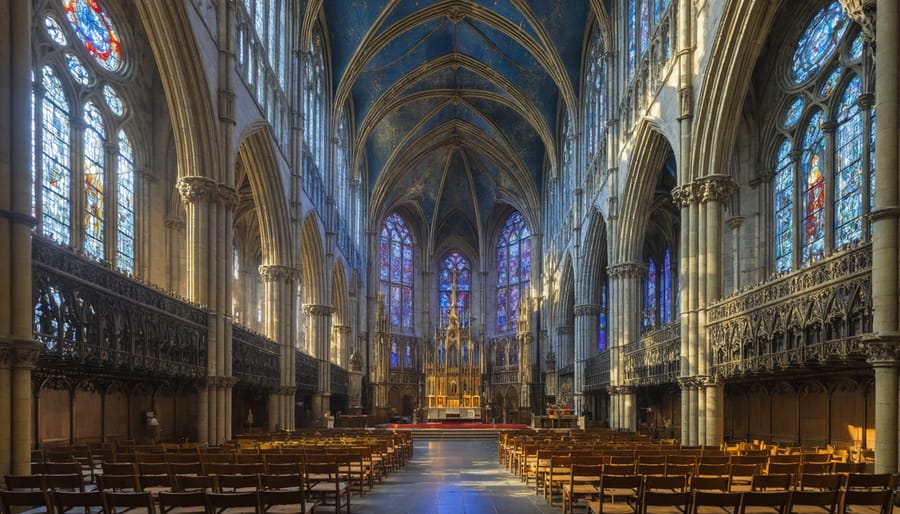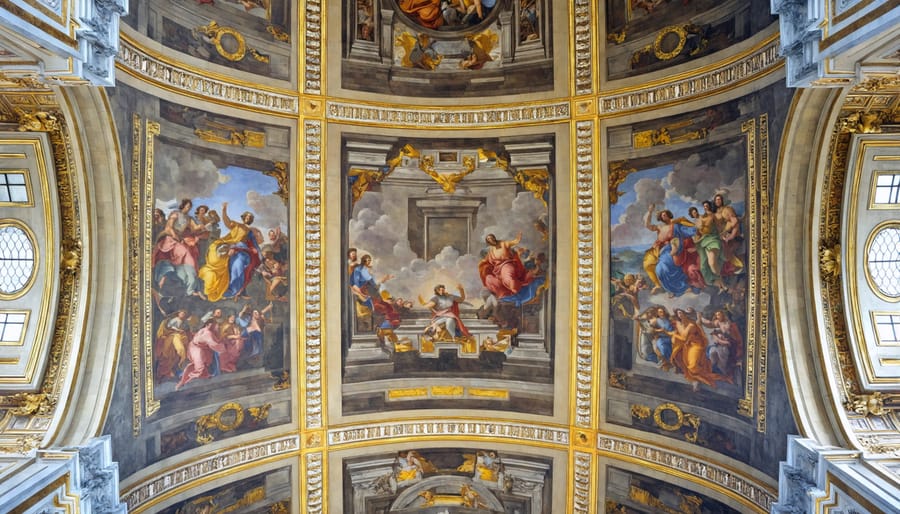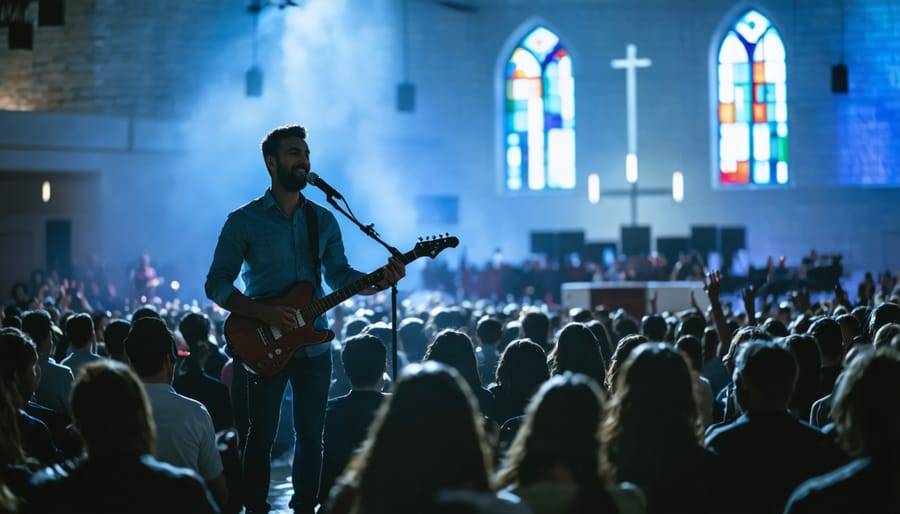Christianity’s profound impact on human culture stands as one of history’s most transformative forces, shaping everything from art and architecture to music, literature, and social values across millennia. From the soaring spires of Gothic cathedrals to the timeless melodies of Bach’s compositions, Christian influence has woven itself deeply into the fabric of global civilization, creating a rich tapestry of cultural expression that continues to resonate today.
The relationship between faith and culture has never been static, but rather a dynamic interchange that has evolved through centuries of human creativity and spiritual devotion. In ancient times, Christian symbols and stories provided the foundation for Western art, while Christian values shaped laws, education, and social institutions. Today, this influence persists in both obvious and subtle ways, from Hollywood’s biblical epics to the moral frameworks that underpin many modern humanitarian efforts.
As we navigate an increasingly diverse and interconnected world, understanding Christianity’s cultural impact helps us appreciate not only our shared heritage but also the ongoing dialogue between faith and contemporary expression. This legacy reminds us that spiritual beliefs have the power to inspire, challenge, and transform societies, creating enduring cultural touchstones that bridge centuries and continents.
The Foundation of Western Art
Sacred Spaces and Architecture
Christian architecture has profoundly shaped the way we design and experience sacred spaces, leaving an indelible mark on global architectural traditions. The soaring Gothic cathedrals of medieval Europe, with their pointed arches and stunning stained glass windows, weren’t just places of worship – they were powerful statements of faith that literally reached toward heaven. These architectural marvels influenced countless buildings beyond church walls, inspiring everything from universities to government buildings.
The Christian architectural legacy continues to influence modern design through elements like cruciform layouts, bell towers, and rose windows. Even today’s contemporary churches often incorporate traditional Christian symbols and spatial arrangements while embracing innovative materials and sustainable practices. The concept of sacred space that Christianity introduced – creating environments that inspire reverence and contemplation – has influenced the design of many secular spaces, from concert halls to memorial sites.
Beyond their physical presence, church buildings have historically served as community anchors, shaping town planning and social life. The parish church model established the practice of creating central gathering spaces that continue to influence modern urban design. This architectural heritage reminds us that faith shapes not just our spiritual lives but also the physical spaces where we live, work, and worship together.

Biblical Narratives in Art
Biblical narratives have served as the cornerstone of Western visual storytelling, transforming sacred texts into vivid artistic expressions that have educated and inspired generations. From the luminous frescoes of the Sistine Chapel to the intricate stained glass windows of medieval cathedrals, these visual interpretations have made Scripture accessible to both literate and illiterate believers throughout history.
Artists throughout the ages have carefully woven profound symbols in Christian art to convey complex theological concepts through visual storytelling. Stories like the Creation, Noah’s Ark, and the Last Supper became universal teaching tools that transcended language barriers and cultural boundaries.
This artistic tradition created a visual vocabulary that continues to influence modern storytelling mediums, from children’s picture Bibles to contemporary films. The use of light symbolizing divine presence, the portrayal of good versus evil, and the moment of redemption have become deeply embedded narrative elements that echo throughout Western artistic expression.
Today, these biblical narratives in art serve not only as historical artifacts but as bridges connecting faith communities across time and culture, reminding us of our shared spiritual heritage and the enduring power of visual storytelling in communicating God’s word.

Christian Art’s Impact on Music and Literature
Sacred Music’s Evolution
The evolution of Christian music reflects a rich tapestry of faith, creativity, and cultural expression spanning centuries. Beginning with the serene simplicity of Gregorian chants in medieval monasteries, Catholic worship music laid the foundation for Western musical development. These early sacred music traditions emphasized the divine through unaccompanied vocal melodies that echoed through cathedral halls.
As Christianity spread across cultures, musical expressions diversified. The Protestant Reformation brought congregational singing to the forefront, with Martin Luther championing hymns in local languages. The baroque period saw the creation of masterpieces like Bach’s cantatas and Handel’s “Messiah,” which continue to inspire believers today.
The 18th and 19th centuries witnessed the rise of gospel music, spirituals, and revival hymns, particularly in America. These forms gave voice to both suffering and joy, creating powerful testimonies of faith through song. The 20th century ushered in contemporary Christian music, blending modern musical styles with faith-based lyrics.
Today’s worship music encompasses everything from traditional hymns to contemporary praise songs, reflecting the diversity of Christian expression. This musical journey demonstrates how each generation finds fresh ways to lift their voices in praise while maintaining connection to their spiritual heritage.

Literary Heritage
Christianity’s influence on literature spans centuries, profoundly shaping storytelling conventions and literary traditions across cultures. The Bible itself, with its parables, poetry, and narratives, established enduring literary patterns that continue to resonate in modern writing. Biblical archetypes, such as the hero’s journey, redemption narratives, and the eternal struggle between good and evil, have become foundational elements in Western storytelling.
Notable works like John Milton’s “Paradise Lost,” John Bunyan’s “Pilgrim’s Progress,” and C.S. Lewis’s “Chronicles of Narnia” demonstrate how Christian themes and symbolism have enriched literary expression. These masterpieces blend spiritual truth with compelling narratives, creating stories that speak to both believers and non-believers alike.
The influence extends beyond explicitly religious works. Christian concepts of grace, redemption, and sacrifice appear throughout world literature, from Dostoyevsky’s exploration of faith and morality to the spiritual undertones in contemporary fiction. Even modern storytelling often draws upon Christian imagery and themes, whether intentionally or unconsciously.
Moreover, the Christian tradition of preserving and transmitting sacred texts contributed significantly to literacy and literary development. Monasteries served as centers of learning and manuscript preservation, ensuring the survival of countless literary works, both sacred and secular, through the ages. This preservation effort helped establish the foundation for modern literary traditions and educational practices.
Today, Christian literature continues to evolve, embracing new genres and perspectives while maintaining its core mission of sharing timeless truths through the written word.
Modern Cultural Expression
Digital and Visual Media
Christianity continues to shape modern digital and visual media, influencing countless films, television shows, and digital art pieces that explore themes of faith, redemption, and spiritual journey. From explicitly Christian productions like “The Chosen” series to mainstream films incorporating biblical narratives and values, these creative works reach global audiences with messages of hope and transformation.
Hollywood has produced numerous successful faith-based films, such as “The Passion of the Christ” and “God’s Not Dead,” while streaming platforms increasingly feature content that thoughtfully engages with Christian themes. These productions often bridge the gap between sacred and secular audiences, creating meaningful dialogue about faith in contemporary society.
Digital artists and content creators use modern technology to reimagine biblical stories and Christian symbolism for new generations. Social media platforms have become venues for sharing Christian art, devotional content, and visual worship experiences, allowing believers to express their faith through creative digital mediums.
Christian influence is also evident in animation and video games, where themes of sacrifice, forgiveness, and moral choice often reflect biblical principles. This digital renaissance has opened new avenues for sharing the Gospel, making Christian narratives accessible and relatable to modern audiences while preserving the timeless messages of faith.
Contemporary Christian Creative Movement
Today’s Christian creative movement is experiencing a remarkable renaissance, blending traditional faith elements with contemporary artistic expressions. Artists across various mediums are finding innovative ways to communicate biblical truths while engaging with modern culture. From visual arts and music to digital media and film, Christian creators are producing work that resonates with both believers and broader audiences.
Modern worship music has evolved to incorporate diverse musical styles, from gospel and contemporary to indie and hip-hop, making spiritual expression more accessible to younger generations. Visual artists are using mixed media and digital platforms to create meaningful works that explore faith themes in fresh ways. Christian filmmakers are producing higher-quality content that tackles complex spiritual and social issues while maintaining biblical values.
Social media platforms have become powerful tools for Christian artists to share their work and build communities. Many creators use Instagram, YouTube, and other digital spaces to showcase art that reflects their faith journey and inspires others. This digital presence has helped foster a global network of Christian artists who support and encourage one another while reaching wider audiences.
The movement emphasizes authenticity and vulnerability in artistic expression, allowing creators to honestly explore their faith experiences while maintaining biblical integrity. This approach has helped bridge gaps between traditional church culture and contemporary society, making Christian art more relatable and impactful in today’s world.
Living Faith Through Art
In today’s digital age, Christians have unprecedented opportunities to express your creative gifts and share God’s message through various artistic mediums. Whether through visual arts, music, literature, or digital media, believers can contribute meaningfully to cultural conversations while reflecting their faith.
Start by identifying your unique artistic strengths and interests. Perhaps you’re drawn to painting, photography, or graphic design. Maybe you have a gift for writing poetry or composing music. Remember that creativity is a reflection of God’s nature, and when we create, we mirror His creative character.
Consider joining or forming a Christian artists’ group in your local church or community. These gatherings provide opportunities for collaboration, encouragement, and spiritual growth. Share your work with fellow believers who can offer both artistic feedback and spiritual insight. Many churches now have worship arts ministries that welcome various forms of creative expression.
When creating faith-inspired art, focus on authenticity rather than forcing explicit religious symbolism. Your faith should naturally inform your work, but this doesn’t mean every piece needs to include obvious Christian imagery. Sometimes, subtle themes of redemption, hope, and grace can speak more powerfully to diverse audiences.
Social media platforms offer excellent venues for sharing your work with broader audiences. Create content that sparks meaningful conversations about faith while maintaining artistic integrity. Consider starting a blog or YouTube channel that documents your creative journey and inspires others to explore their artistic gifts.
Remember that Christian art isn’t limited to traditional sacred subjects. Your work can address contemporary issues through a biblical worldview, offering fresh perspectives on social justice, environmental stewardship, relationships, and personal growth. Let your art be a bridge between faith and culture, inviting others to consider eternal truths in new ways.
Seek opportunities to mentor younger artists in your faith community. Share your knowledge and experience while encouraging them to develop their unique artistic voice. Consider organizing workshops or exhibitions that showcase Christian artists and their contributions to cultural dialogue.
Above all, approach your artistic practice as an act of worship. Regular prayer and Bible study can inform and inspire your creative work. Trust that God can use your artistic expressions to touch hearts and minds in ways that traditional ministry methods might not reach.
The enduring legacy of Christian art stands as a testament to faith’s profound ability to shape and enrich human culture. Throughout history, Christian artists have woven their deep spiritual convictions into masterpieces that continue to inspire, challenge, and move people of all backgrounds. From the soaring spires of medieval cathedrals to contemporary worship music, this artistic heritage serves as a bridge between heaven and earth, helping us glimpse the divine through human creativity.
As we’ve explored, Christian art has not only preserved our faith’s stories and traditions but has also adapted to reach new generations with timeless truths. Today, this legacy invites us to participate in its ongoing story. Whether through supporting local Christian artists, incorporating sacred art into our worship spaces, or creating our own expressions of faith, each of us can play a role in carrying this rich tradition forward.
Consider taking time to visit a historic church, attend a sacred music concert, or explore Christian art exhibitions in your community. Let these encounters deepen your faith journey and inspire your own creative response to God’s love. Remember that as believers, we are all called to be culture-makers, following in the footsteps of countless faithful artists who used their gifts to glorify God and serve others.
This magnificent heritage reminds us that beauty can be a powerful witness to God’s truth and grace, touching hearts and transforming lives across centuries and cultures.
